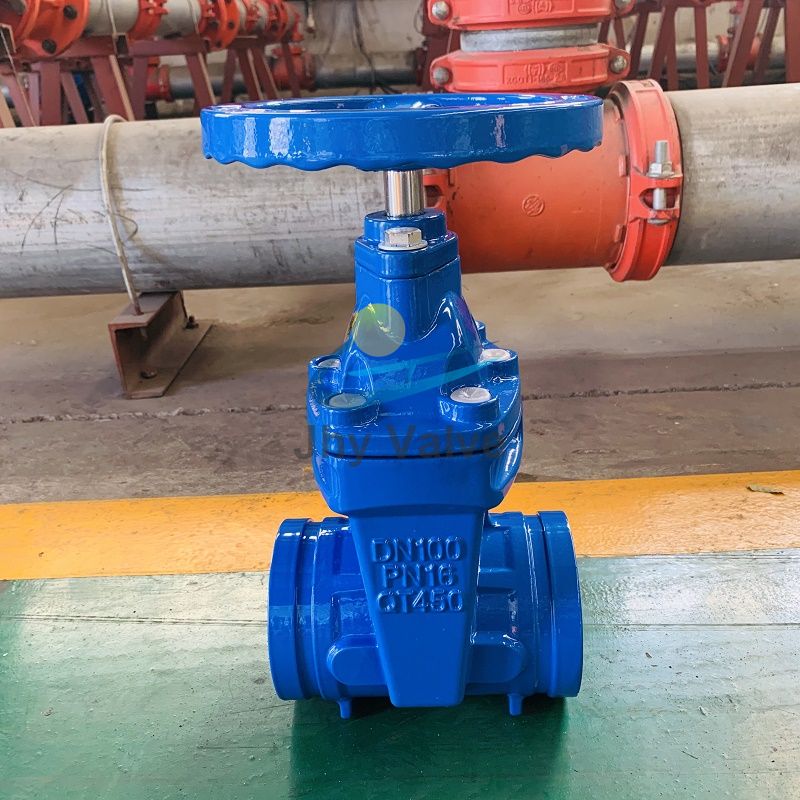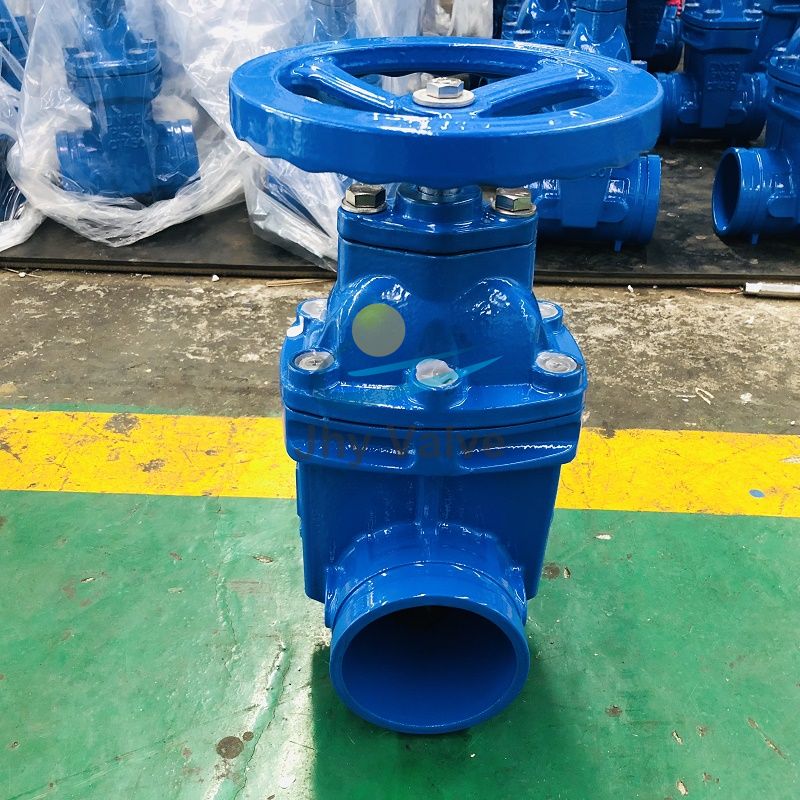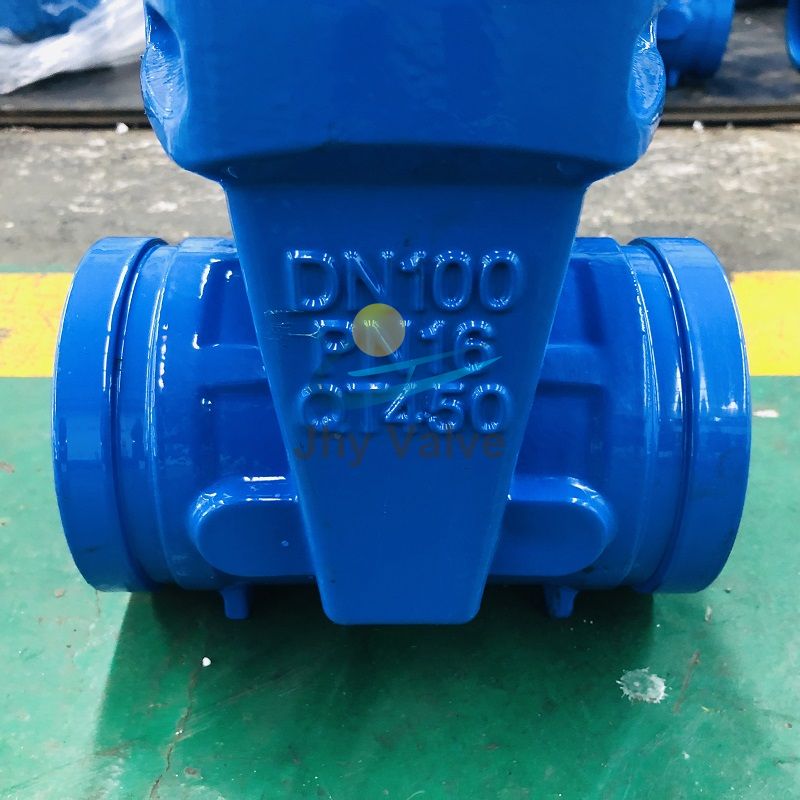Non Rising Stem Socket End Gate Valve Description
A non rising stem socket end gate valve is an industrial valve used for reliable shutoff and flow control of liquids, gases, and slurries. It consists of a stationary stem that does not rise or lower as the valve is operated. The stem is threaded and fitted with a socket end connection, allowing it to be screwed into the valve body and enabling easy maintenance or stem replacement.
As the handwheel on top of the valve is rotated, the gate (a solid wedge) moves up and down the stem, sealing against the seats inside the body to shut off flow or retracting to allow flow. The gate has a sealing surface on the bottom and top to provide bi-directional shutoff. The non rising stem design allows the valve to be installed in confined spaces, as the stem does not move up or down.
This type of valve is made from sturdy materials like cast iron, carbon steel, or stainless steel to provide durability and strength. The body is typically y-pattern or straight pattern. Socket end gate valves are available in a variety of sizes, pressure classes, end connections, and actuation types to suit different industrial applications. Key benefits include tight shutoff, low maintenance, long service life, and the ability to regulate and isolate flow precisely.JHY also offers regulating valves. Read more about the benefits.

Size: 1½" - 48" (DN40 - DN1200)
Standard: DIN / BS / ANSI / Korean
Structure: Gate
Pressure: PN10, PN16, PN25
Coating: WRAS approved epoxy powder at 300 micron thick
Media: Water
Certificate: ISO, SGS, CE
| Name |
Material |
| Body |
Ductile iron GGG50 with WRAS FBE coating |
| Stem |
Carbon steel with galvanization, SS420, SS304, SS3316 |
| Wedge disc |
Ductile iron GGG50 overall EPDM rubber coasting |
| handle |
Thin iron, ductile iron |
| Wedge nut |
Ductile iron, brass |
Non Rising Stem Socket End Gate Valve Features:
• Stationary non rising stem - Stem does not rise or lower during operation, allowing installation in confined spaces
• Socket end stem connection - Enables easy stem replacement without removing valve from the line
• Solid wedge gate - Provides bi-directional shutoff when fully closed
• Y-pattern or straight pattern body - Choice of flow passage designs
• Variety of end connections - Threaded, flanged, welded ends available to fit different pipes
• Rugged materials - Durable cast iron, carbon steel, or stainless steel construction
• Multiple pressure classes - Available for low, medium, or high pressure applications
• Manual or automated operation - Choice of handwheel, chainwheel, pneumatic, hydraulic, or electric actuation
• Graphite or metal seating - Provides tight shutoff with low torque
• Bonnet joint - Bolted and gasketed seal prevents leakage
• Sizes from 2" to 48" - Wide range of valve sizes for different flow requirements
• Bidirectional sealing - Seals in both flow directions for flexible operation
• Low maintenance - Durable parts require little servicing over long service life
Non Rising Stem Socket End Gate Valve Advantages:
• Reliable Flow Control - The gate provides precise regulation of flow as well as leak-tight shutoff when fully closed.
• Compact Design - The non rising stem allows installation in confined spaces where rising stem valves won't fit.
• Easy Maintenance - The socket end stem connection enables quick stem replacement without removing the valve.
• Long Service Life - Durable cast iron, carbon steel or stainless steel materials allow a long service life.
• Reduced Stem Exposure - Keeping the stem stationary prevents damage from the process fluid.
• Lower Torque Operation - The non rising stem design requires less torque to operate compared to rising stems.
• Bi-directional Sealing - Gates seal in both directions, allowing for versatile operation.
• Tight Shutoff - The gate provides bubble-tight shutoff when fully closed, preventing leakage.
• Variety of Sizes - Available in a wide range of small and large sizes for various applications.
• Suitable for Harsh Fluids - Can handle abrasive liquids, gases, slurries, corrosive media, and high/low temperatures.
• Low Maintenance Needs - Requires less routine servicing compared to other valve types.
• Operational Safety - The stationary stem eliminates hazards associated with rising and rotating stems.
Non Rising Stem Socket End Gate Valve applications:
• Water Treatment - Used for isolation and flow control of incoming and outgoing water in treatment plants. Important for regulating filter backwashing.
• Chemical Processing - Employed for controlling flow of corrosive chemicals, acids, slurries and wastewater in pipes. Useful for isolation of tanks and reactors.
• Oil Refining - Applied for regulating distillate fractions and diverting flow between towers and reactors in refinery processes.
• Power Generation - Used in feedwater systems, condenser water boxes, and for isolation of pumps and heat exchangers in power plants.
• Pulp and Paper - Installed for controlling cooked pulp stock flows and process water. Also used for steam and condensate systems.
• Mining - Useful in mine dewatering systems and mineral slurry pipelines for flow modulation and shutdown duties.
• Fire Protection - Required as main shutoff valves in water-based fire sprinkler systems per fire code.
• HVAC Systems - Used to isolate zones, modulate chilled water flow, and regulate heating hot water in large buildings.
• District Energy - Applied at energy plants for modulation of steam or hot/chilled water to buildings within a district system.
• Water Networks - Employed throughout municipal water distribution for critical isolation applications and flow regulation.
• Wastewater Treatment - Used in influent channels, clarifier effluent lines, and sludge processing systems at plants.









